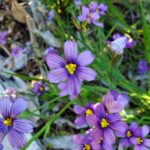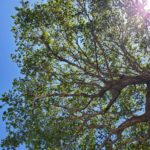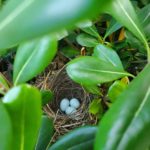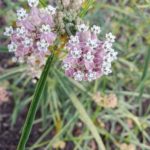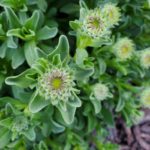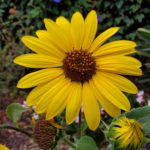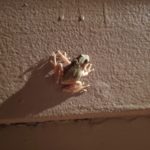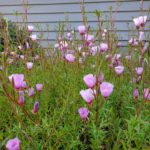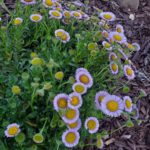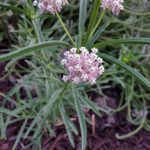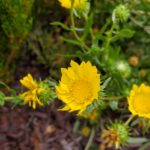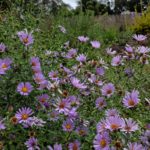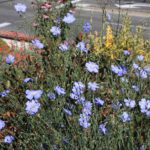Lot size: 2,000 sq. ft. front garden, 75% native
Garden Age: Garden was installed in the fall of 2021
Years on the Bringing Back the Natives Garden Tour: New this year!
Showcase Feature
Are you new to gardening? Or, are you interested in the DIY model of selecting native plants and installing them yourself? If so, this is the garden for you! In the beginning Brian, a first-time homeowner, was such a novice that he didn’t even have a shovel, and was digging planting holes with a kitchen spoon. (Thankfully, a neighbor gave him a trowel.) He has done a lot of research (ask about his favorite sources of information); experimented with native plants; and been a keen observer and photographer of the tiny world of life in his garden.
When Brian bought the house in 2019 the garden consisted of “for sale” landscaping”—meaning, recently-installed non-native Home Depot shrubs in a sea of mulch that was shoveled over landscape fabric.
The garden has been through a couple of iterations since then—including one as a pumpkin patch—before Brian discovered native plants and designed and installed the garden you see today. Now, seventy species of natives selected because of their value to native birds, bees, and butterflies rub shoulders in the garden. Brian has enjoyed seeing birds, bees, butterflies and other insects that had not previously been seen in the thriving habitat he created— “many species I didn’t even know existed until I had the garden.”)
Wildflowers flourish in spring, when drifts of gorgeous, long-blooming pink-lavender ruby chalice clarkia and purple phacelia brighten the garden. In summer, fire engine red fuchsia, cream colored buckwheat, yellow gum plants, lavender aster bloom in profusion. Brian can often be found looking closely at the plants and insects in the garden, watching carefully and photographing the action.
Other Garden Attractions
• Bring a lunch and enjoy it under the majestic oak on the back garden. Or, just pop on back there to rest in the shade, have a glass of water, and check out the handouts and other information that will be available.
• Plants are only watered while they are being established.
• Most of the plants in this garden were bought in 4” pots! (Plants in small pots are cheaper, will grow in quickly, and are easier to plant.)
Gardening for Wildlife
On spring evenings diminutive Pacific chorus frogs have been seen hopping about searching for yummy bugs. Towhees nest in the garden; when not sitting on their eggs, they scratch about on the ground, looking for seeds and insects, and keeping a sharp eye out for berries. Goldfinches glean seeds from spent blossoms. Anna’s hummingbirds sip nectar from the long, tubular flowers of the fuchsia and penstemon. Monarch, swallowtail, buckeye, tiny blue butterflies and skippers are frequent visitors, along with honey, leaf cutter, sweat, and carder bees.
This lively and fascinating crowd of tiny creatures are drawn to the garden by the year-round blooming plants, berries, seeds, and nesting areas, such as hollow-stemmed plants and areas of bare earth that are left for solitary native bees to nest in, sticks, twigs, and thickets that encourage birds to nest, and logs, that provide damp, cool places for small things that need shelter from the heat. 
Keystone species (watch this talk by Doug Tallamy!)
Keystone species—our own, local ecological powerhouse plants— in this garden include California lilac, manzanita, blood currant, aster, lupine, buckwheat, goldenrod, woodland strawberry, and cream bush.
Garden Talks
12:00 Bring a sack lunch to enjoy in the shady back garden during the “How I created a habitat garden, and the wildlife I’ve seen” talk by Brian Teng
Music in the garden
2:00 Come hear a guitarist perform jazz (and other musical styles).





